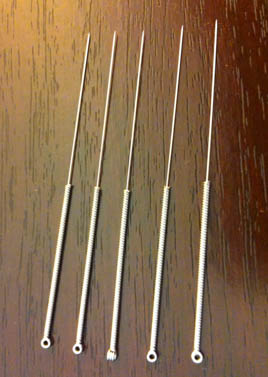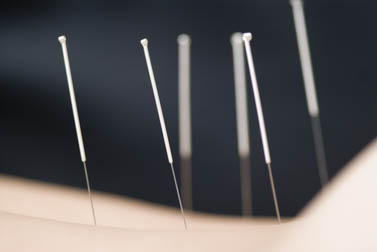Acupuncture helps women with stress urinary incontinence (SUI). This condition is characterized by leakage of urine during physical activity, standing, sexual intercourse, sneezing, or coughing.  Stress incontinence is due to pelvic floor muscle weakness leading to increased pressure on the bladder upon stress. Risk factors include pelvic surgery, hormonal deficiencies, and delayed second stage of labor. Forceps delivery may also be associated with this condition. The researchers discovered that a special acupuncture procedure produces a total effective rate of 93.3%.
Stress incontinence is due to pelvic floor muscle weakness leading to increased pressure on the bladder upon stress. Risk factors include pelvic surgery, hormonal deficiencies, and delayed second stage of labor. Forceps delivery may also be associated with this condition. The researchers discovered that a special acupuncture procedure produces a total effective rate of 93.3%.
Standard care treatments include pelvic floor muscle exercises, retiming of fluid consumption, urethral inserts, injectable bulking agents, and several surgical procedures. In this study of 60 female patients with SUI, a control group practicing pelvic muscle floor exercises was compared with a treatment group receiving acupuncture combined with pelvic floor muscle exercises. The average symptom duration for all patients was between 9.7 and 10 years.
The pelvic floor muscle exercises were practiced every day for 30 days. Acupuncture was applied to a series of acupoints known as Baliao, translated as eight crevices. This series of 4 points are individually known as Shang Liao (BL31), Ci Liao (BL32), Zhong Liao (BL33), and Xia Liao (BL34). The acupoints are located over the first through fourth sacral foramen.
Deep needling was applied at angles between 30 and 45 degrees. Needle retention time was 20 minutes per session. Moxibustion was applied to warm the needles. Acupuncture treatments were applied 5 times per week for a total of 6 weeks. The control group had a total effective rate of 70% and the acupuncture treatment group had a total effective rate of 93.3%.
The researchers note that use of the acupuncture point prescription used in the study is consistent with Traditional Chinese Medicine (TCM) theory. Many urinary disorders are related to kidney deficiency and qi deficiency. Baliao points are traditionally used to nourish kidney qi and regulate urination. Baliao points regulate the bladder and stimulate local muscles. As a result, the acupuncture point prescription is consistent with TCM principles of treatment.
It appears that the researchers are testing a protocol of care for SUI that is less invasive than surgical intervention.  Currently, SUI may be treated with a sling procedure, retropubic colposuspension, or an inflatable artificial sphincter. The sling procedure is insertion of a mesh support system for the urethra. The support may be synthetic, the patient’s own tissue, donor tissue, or animal tissue. Retropubic colposuspension involves attachment of sutures to lift the bladder and upper urethra. The inflatable artificial sphincter is an implant but is more commonly used for men than women.
Currently, SUI may be treated with a sling procedure, retropubic colposuspension, or an inflatable artificial sphincter. The sling procedure is insertion of a mesh support system for the urethra. The support may be synthetic, the patient’s own tissue, donor tissue, or animal tissue. Retropubic colposuspension involves attachment of sutures to lift the bladder and upper urethra. The inflatable artificial sphincter is an implant but is more commonly used for men than women.
Given the high efficacy rate of acupuncture combined with pelvic muscle floor exercises, it is a reasonable treatment option. Additional research on all of the SUI treatment options will help to determine a refined protocol. Larger sample size studies and long-term studies will help to identify methods to achieve maximum positive patient outcomes.
Reference:
Liu Jie, Yang Shaoqin, Shi Ying, Curative effect observation of needle warming moxibustion Ba Liao point combined with pelvic floor muscle exercise in the treatment of female stress urinary incontinence, Chinese Community Doctors, 2015 (8).


